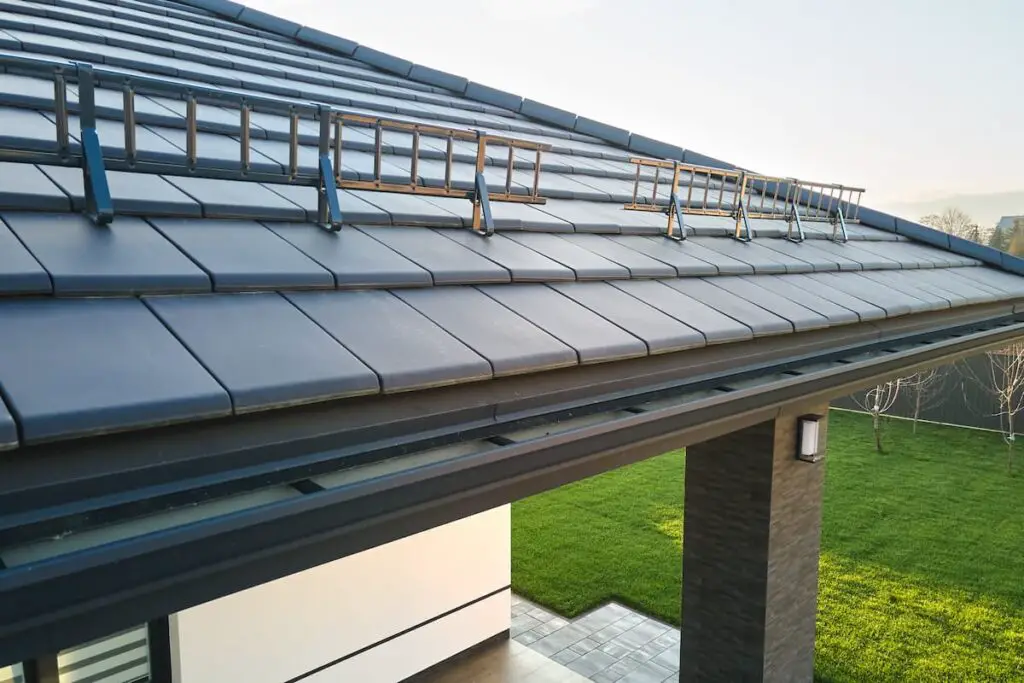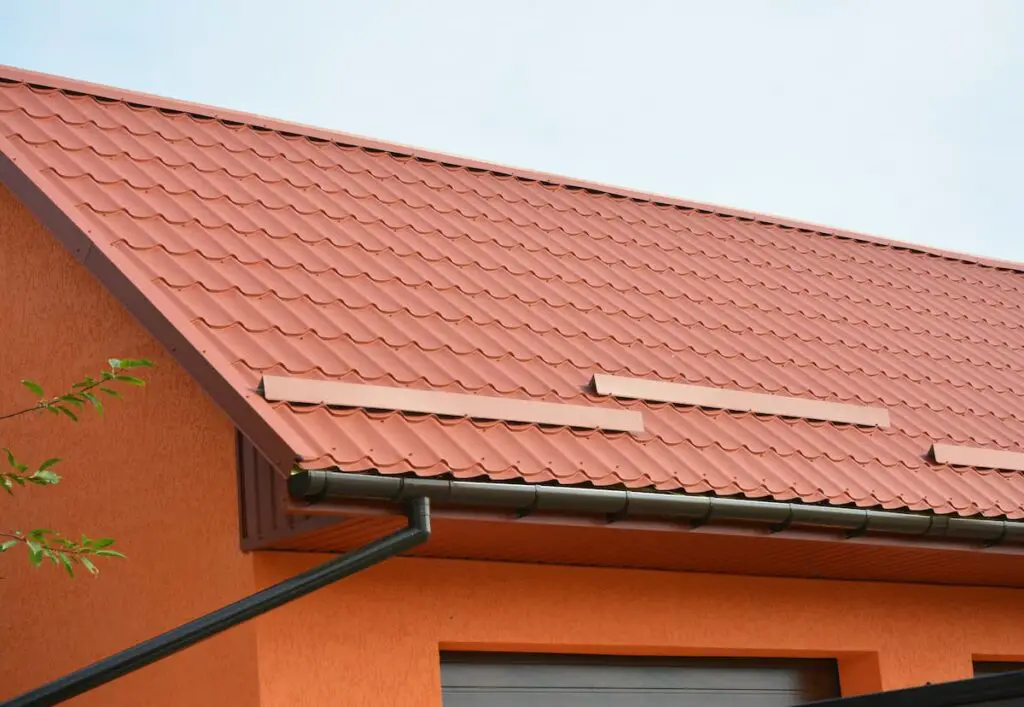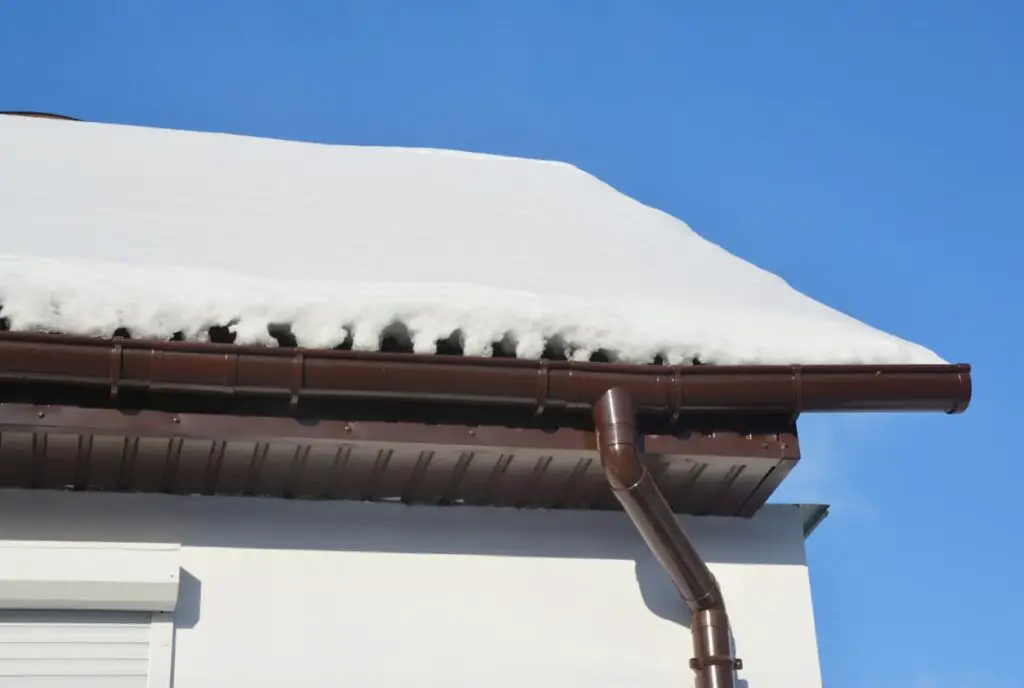As an Amazon Associate, we earn from qualifying purchases. We may also earn commissions if you purchase products from other retailers after clicking on a link from our site.
Gutter guards keep leaves and other debris out of your gutter system, but how do they perform in the winter when snow and ice accumulate on the roof? Should the guards be removed before the snow falls?
You should not remove gutter guards in the winter in most cases because they can help clear snow and ice more quickly. If a home is susceptible to ice dams, removing gutter guards won’t prevent them. Finally, winterizing your gutters is more important than removing the guards.
A one-inch layer of ice weighs about 5 pounds (2.27 kg) per square foot, and a 20-foot gutter run full of ice weighs around 200 pounds (90.71 kg). So whatever you decide, the gutters need to be cleaned before winter snow arrives. Keep reading to learn more about gutters, gutter guards, and how to prepare them for winter weather.

3 Reasons To Keep Gutter Guards in the Winter
The Internet is full of contradictory information about gutter guards and what to do with them during the winter. Here are three reasons why you should not remove them from the gutters.
1. Gutter Guards Help Gutters Stay Clog-Free
Gutter guards keep gutters clear all year long. Yes, it’s winter, and most of the leaves have fallen. However, a strong wind can send fallen leaves or dirt onto your roof.
Gutter guards keep ice from building up. Additionally, when the air becomes warmer, water from melting ice has a place to go.
2. The Guards Keep the Gutter Weight Down
Guards can keep gutter weight down. Most of the ice builds on top of the guard surface rather than inside the gutters. As the sun heats the roof, the snow and ice on the guards will melt first.
Icicles will melt and fall, and the gutter will begin to flow freely, rather than after constant thawing and refreezing. Therefore, the gutters will not be weighed down with ice and snow as long as those without gutter guards.

3. They Increase the Performance of Heat Cables
Heat guards or cables will perform better if they don’t have to melt huge chunks of ice. For example, a gutter guard will slow the amount of snow that falls into the gutter so the heat guards can melt the snow before it turns into packed ice.
Installing heat cables is a popular approach to treat gutters that freeze frequently. A heating panel can melt ice effectively without damaging your gutters. Although you can make this a DIY project, a professional installation might be preferred. It’s a simple but expensive way to defrost frozen gutters.
When Should You Remove Gutter Guards in the Winter?
You should remove gutter guards in the winter if your house is susceptible to ice dams. Removing them will give you the time you need to solve the underlying conditions that cause the ice dams to form.
Ice dams form when your home has poor insulation and ventilation. Gutter guards can lead to additional ice forming on the gutter. That extra weight might require you to hire an ice removal company. The removal company will need more time to get the ice out of the gutters.
Gutters without guards can be sprayed with steam, and the employees can reach in and toss out chunks of ice. However, gutter guards require melting all the ice in your gutters. It is a time-consuming process that takes much longer and winds up with a bigger bill that you get stuck with.
How To Winterize Your Gutters
Cleaning your gutters or gutter guards before winter is essential for two reasons. One is that the fall leaves will clog them. When the snow melts, the water won’t be able to drain away. The trapped water will freeze, weighing down the gutters.

First, have your gutters cleaned and inspected. Gunk and dirt can still fall through the guards. More importantly, have the gutter cleaners inspect your gutters. These are the things you want them to look for:
- Gutter Pitch. For various reasons—improper installation, sagging or damaged gutters, or shifting foundations—improperly pitched gutters can keep water from draining correctly.
- Hangers. Hangers should be adequately spaced for your location, which can be around 18 inches in areas that receive a lot of rain and snow. Hangers should also be firmly attached. Gutters that sag from the fascia can cause wood rot.
- Flashing. Ask the gutter inspectors if your roof needs additional flashing to keep water from running seeping under the shingles.
Additionally, invest in a good roof rake. Ice dams can make frozen gutters more difficult to defrost since they add an additional layer of ice and snow that must melt. After a snowstorm, use a roof rake to push off the snow before it can accumulate.
Accumulated snow will create an ice dam that will damage not only the gutters but the roof as well. Unfortunately, a roof rake can remove snow but not ice, so this is a preventative measure.
Gutter protection does not keep leaves and debris off your roof, but it does keep the gutters from becoming blocked. Debris can sometimes gather on top of the gutters, so keep the gutter guards as clean as you can.
What To Do if the Gutters Are Frozen?
If the gutters are frozen, you will need to pour hot water onto the ice for a simple and efficient way to melt the ice. However, getting enough hot water to melt the ice in a gutter can be difficult. If your water hose is long enough, hook it up to your water heater.
This will provide you with a steady flow of hot water to melt the ice that has formed in your gutters. If you only need to melt the spouts, a pot of hot water might be enough to do the trick.
Using salt-filled stockings is a common suggestion. The idea behind this procedure is to keep the salt contained in the pantyhose so that it doesn’t damage the gutters. However, this procedure doesn’t work well with an entire gutter. Instead, you can use it to melt small sections, especially if you need to melt an ice dam.
Bottom Line
Unfortunately, unless you can afford an ice removal company, there is little else to do once your gutters are frozen. Clean gutters that are securely fastened to the fascia can hold the weight of ice under normal conditions.
However, if ice dams build on your roof repeatedly, you need to take care of that problem. The dams can lead to far more serious problems than loose gutters.
